Texas trees are taking a hit this year thanks to extreme heat and severe drought on the heels of severe freezes earlier in the season.
Pecan trees in particular seem to be suffering. The native nut and state tree of Texas is famous for “self pruning,” meaning it drops limbs randomly. But unfavorable weather has pushed pecan trees and growers across the state to the brink, according to a recent article in Texas Monthly Magazine.
Many pecan farmers across Central Texas expect a massive die-off this year. Pecan farmer Winston Millican, whose family has farmed pecans for generations, told the magazine he anticipates losing as much as 10 percent of his orchard–nearly a thousand pecan trees. And the trees that survive will be much less productive.
In San Antonio, recently recognized as Texas’ first Tree City of the World by the Arbor Day Foundation and the Food and Agriculture Organization of the United Nations, we’re witnessing a similar story, and not just with pecan trees.
A recent walk through Olmos Basin Park revealed dozens of dead and damaged trees, many with snapped and broken trunks, their fallen limbs blocking the trail.
Across from Blue Star on the San Antonio River, a loud crack interrupted a dog walk as a five-inch diameter sycamore tree branch fell to the ground. Fortunately for dog and human, the branch landed away from the path.
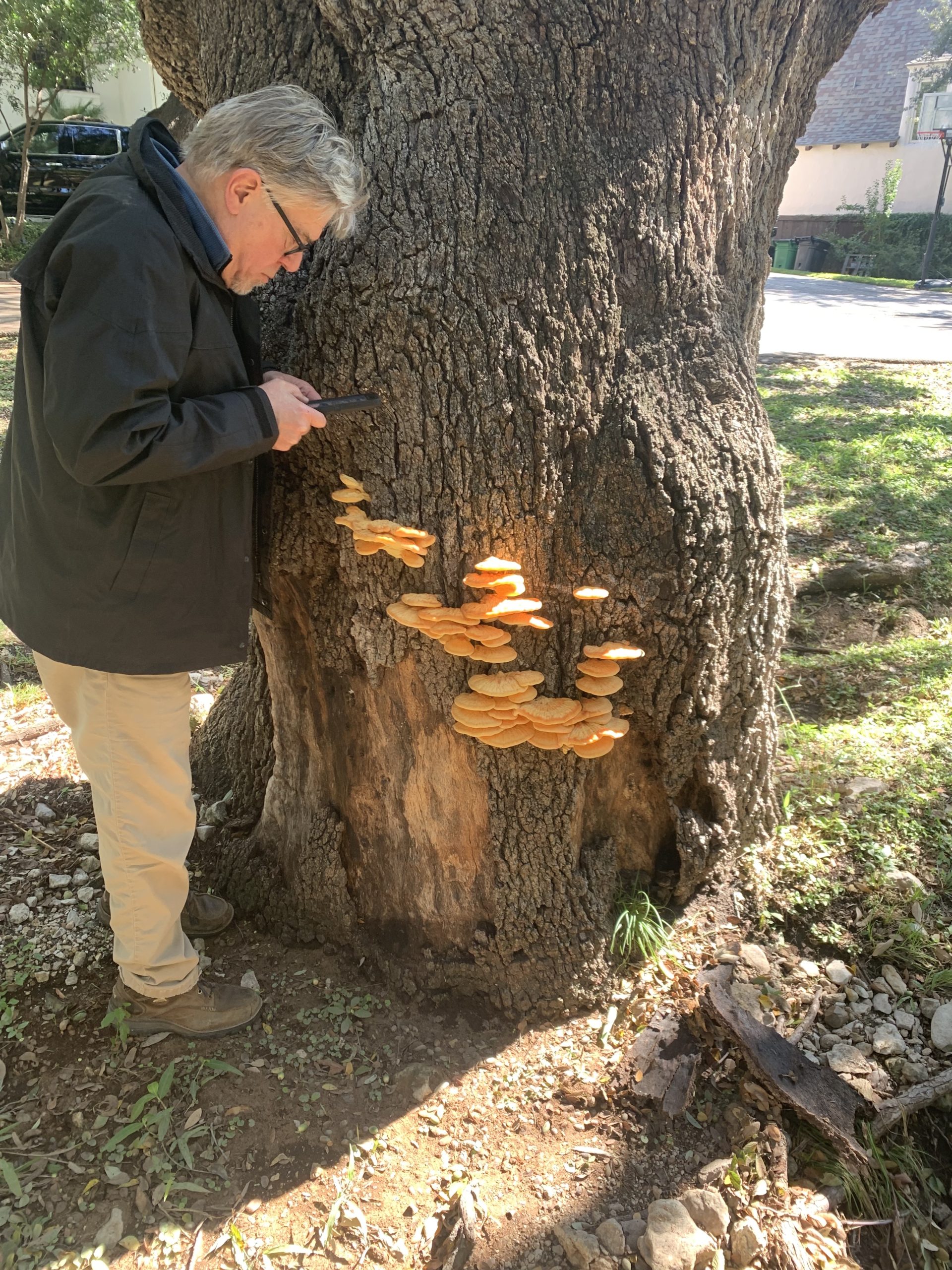
Etter Tree Care arborist Mark Peterson examines a live oak riddled with fungus in San Antonio. Photo courtesy Ed Etter
The incident followed a dramatic chainsaw clean-up by San Antonio River Authority crews of a nearby heritage American Elm that had lost large limbs a month earlier. The area had been roped off to ensure safety for walkers along the trail.
While no official tree census has been done, City Forester Michael Holinsky said the broad and obvious overview is that San Antonio has experienced “a lot of tree loss.” Arborists and horticulturists around the city agree that extreme weather and drought have set up a perfect storm for compromised immune systems in trees.
Red oaks, Shumard oaks, sycamores, pecans and cedar elms have been especially susceptible. And the losses are not discriminating between old and young trees, Holinsky explained. Trees that have been healthy for hundreds of years, as well as newly planted young trees, have perished.
“It’s a testament to just how rough the last few years have been,” he said.
Bexar County is classified currently as being in exceptional drought. The accumulation of drought and extreme weather creates a situation in which the trees have fewer resources available to fight common challenges like wind, pests and fungal infections.
“With the cold spells, the drought, all the different stressors, it all keeps accumulating,” said Peter Pierson, a natural resource management specialist and certified arborist for the river authority. “The trees have just had a bad spell, and that causes decline.”
Pierson labeled the moment a “real challenge” and “a difficult situation.”
“I’ve been in business 47 years and have never seen it like this,” said Ed Etter, owner of Etter Tree Care. “As you drive around town, unless you’re blind, you’ll see dead trees everywhere.”
Even the coddled River Walk, where irrigation systems and regular maintenance crews look after the treescape, has been effected.
“It’s certainly taken a toll on us,” said Juan Guerra, chief horticulturist for the city who oversees the River Walk and South Channel in King William.
Guerra said that since trees along the River Walk are watered regularly, the toll has been less than in more natural areas. And because the River Walk is not a solid concrete channel, the trees can access water from the bottom silt. “Those trees are happy,” he said.
He added that despite regular watering, several crape myrtles and Burr oaks on the east bank of the South Channel had succumbed to the extremes, “but not as many as in other areas.”
Holinksy and others said the situation has become so severe that arborists are exploring installing tree species that are noninvasive but technically not native to the San Antonio area. Climate scientists are recommending species appropriate for hotter, dryer climates in anticipation of a warmer world. He cited planting more Montezuma cypress, which is native to Mexico and requires less water than the native bald cypress, as an example.
In the meantime, the best way to help your own trees is to water them once a week for 30 minutes to an hour, depending on your specific soil conditions or your tree. If you have several trees in close proximity, water in the middle of the group for maximum water efficiency.
Etter Tree Care arborist Michael Nentwich, who serves as the president of the urban forestry nonprofit Bexar Branches Alliance, encourages not waiting for a drought before watering. He suggests checking the soil with a long-shafted screwdriver to assess moisture levels.
“It’s like sticking a toothpick into cupcakes — if it comes out easily, and you have some moisture on there, it’s fine,” he said.
TOP IMAGE: An oak tree in San Antonio succumbed to extreme conditions.–Photo by Monika Maeckle
Related posts:
- Diminished monarch migration moves slowly through Texas into Mexico
- IUCN revises listing of monarch from “endangered” to “vulnerable”
- Monarch migration underway as new studies suggest butterflies are “not in danger”
- Q & A : Migration studies expert Andy Davis says, for monarchs, it’s survival of the biggest
- Recent IUCN “endangered” listing creates confusion for monarch butterfly followers
- Eastern monarch population up 35% this year, but still much work to do
- Dejavu: is 2022’s dry spring setting the stage for another Texas drought like 2011?
- Three monarch butterflies tagged in honor of those who died recovered in Mexico
- They’re here! Drought conditions greet monarch butterflies as they arrive in Texas
Like what you’re reading? Don’t miss a single post from the Texas Butterfly Ranch. Sign up for email delivery, like us on Facebook, or follow us on Twitter, @monikam or Instagram.

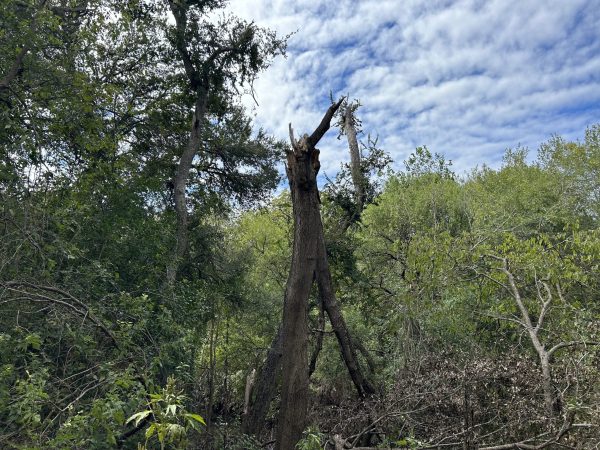

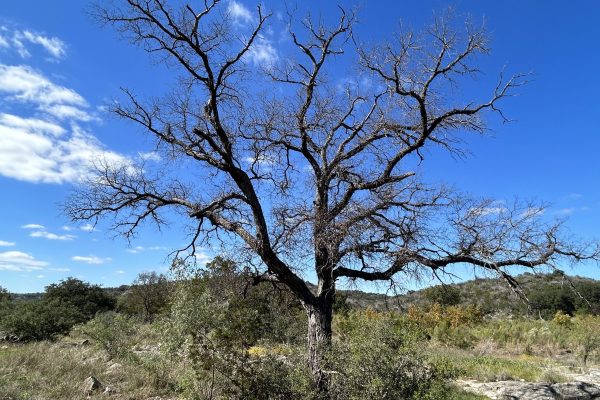
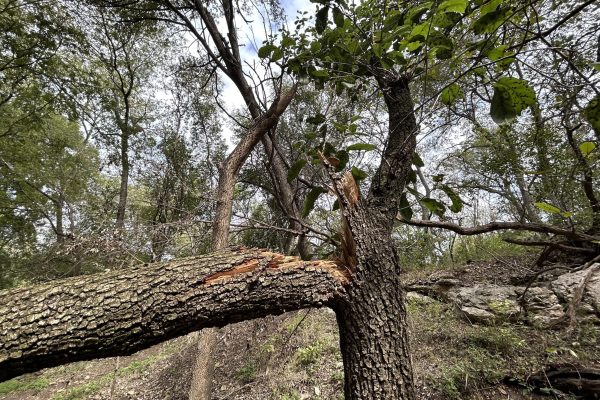
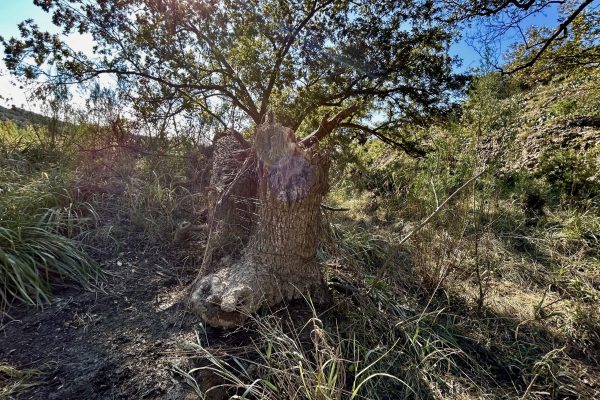
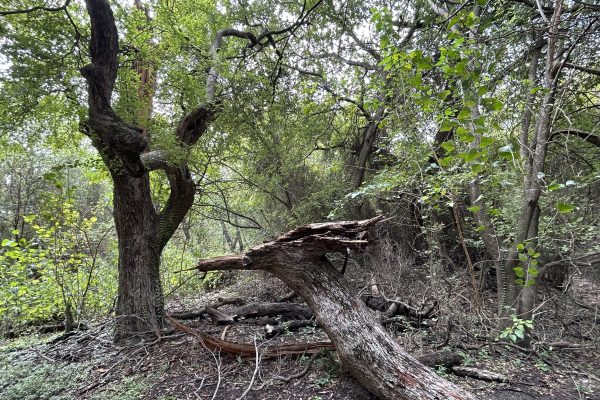
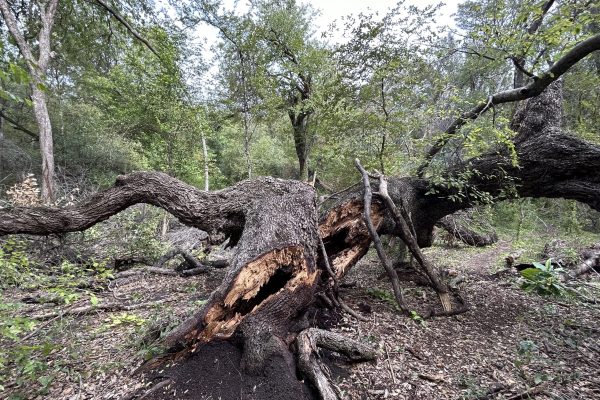
Have faith! Life finds a way!